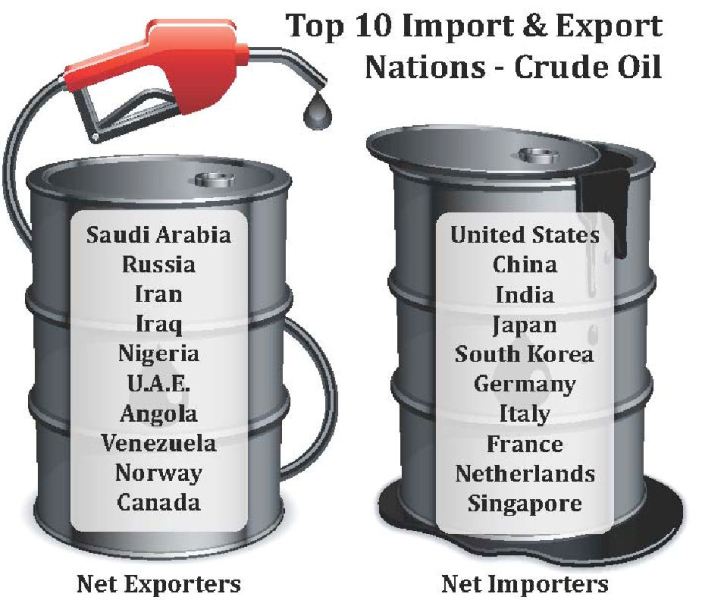If we had to use one word to summarize our view of 2015, the word would be “divergence.” While this could also aptly describe many markets of the past, we think the word may be especially appropriate now. In 2015 we are/will be seeing: divergent beneficiaries from the recent oil price collapse, divergences among Central Bank monetary policies, divergent currency trends and the beginning of divergence in the U.S. equity market from its performance leadership of recent years.
U.S. stocks continued to be one of the best performing markets in 2014. But this leadership could begin to gradually fade in 2015 as global growth broadens and U.S equities start to appear more than fairly valued relative to competing global issues. Earnings should become the main driver of U.S. stock performance since further P/E expansion seems unlikely. According to FactSet Market Insight, the forward 12-month P/E for the S&P 5oo Index, at 16.2, is above the 5-year, 10-year and 15-year averages. Industry analysts expect S&P 500 earnings to rise 7.7% in 2015. If these earnings projections prove accurate, it would be reasonable to expect high-single-digit returns from U.S. stocks in 2015. Not bad, just not gang-busters.
The U.S. economy was the driving force behind global growth in 2014, and that should continue in 2015. Employment growth has begun to accelerate to the upside in recent months as we expected. This should buttress an improving trend in sentiment and encourage more spending. The economic expansion is becoming increasingly durable and no longer merits a zero percent interest rate policy. Meanwhile, American strength should begin to spread to the global economy over the course of 2015. The central banks of Europe and Japan are likely to continue to expand quantitative easing while America will begin the process of normalizing rates through tightening. Rising U.S. import demand, which comprises 13% of global exports, has not sparked acceleration in global trade so far. But the sinking currencies of Japan and Europe, along with falling commodity prices, should give a shot in the arm to the broader cyclical recovery. This has the potential for creating the best year of growth in the global economy since the Great Recession.
This broadening of global growth should bring a divergence in market performance, as depressed earnings and P/E multiples overseas expand and close their performance gap with U.S. stocks, which have been trading at a premium. In spite of this, we believe circumstances will remain favorable for U.S. corporate profits and equity prices as well.
Most economic expansions and bull markets end when inflation pressure builds or financial asset bubbles appear – causing central bankers to tighten and restrict growth. Recent Consumer Price Index data and Producer Price Index data in the U.S. reflect annual increases of only 1.7% and 1.8%, respectively. These should soften further as recent commodity price declines filter through the data. This compares favorably with the Federal Reserve’s current 2% inflation target. It should allow the Federal Reserve leeway to continue to be supportive of growth, helping the bulls stay in control of U.S. stocks.
The outlook for international equities remains favorable, but there is likely to be divergence brought about by the sharp decline in oil prices since June. This decline has been driven by rising supply, much of it from the U.S. shale boom. But soft global demand has also played a part. The result is that countries that are net oil importers benefit from higher household income, lower input costs and improved external positions. India and Indonesia have already taken the opportunity to lower their oil subsidies to citizens. And the U.S. is considering raising taxes on oil for the first time in several years.
Net oil exporters, on the other hand, find their public budgets and external balances under pressure. Since oil exporters also tend to have less diversified economies, the harm of price declines is magnified. This has the potential to cause financial instability in some exporting countries such as Russia, Nigeria and Venezuela. This will bear close watching for any signs of contagion effects. But on balance, we see softer oil prices as a net positive for both global growth and equity performance. We especially like the prospects for India, China, Japan, Germany and South Korea.

Emerging market P/E ratios are near the lower end of their range versus U.S. P/E ratios, making their valuations attractive. We like countries willing to push forward structural reforms that benefit the corporate earnings outlook. These include China, India and Indonesia. China is planning to roll out a long-awaited deposit-insurance program, possibly as early as this month. The program should enhance the confidence of investors both within and outside China. In India, where inflation is expected to fall from 7.3% in 2014 to around 5.8% in 2015, lower policy rates should spur growth, which would be favorable for Indian stocks.
The second-half breakdown in oil prices not only harmed the equity markets of major oil exporters in 2014, it also hit the high-yield bond market hard. The Bank of America Merrill Lynch High Yield Master Index II rose a modest 2.5% for the year, largely due to a 7.5% drop in the energy sector (which has a 15.3% weighting in the index). Cautious investors pulled over $20 billion out from high-yield bond funds during the year, pushing yield spreads over Treasuries higher by more than 150 basis points. We have mitigated this impact to our fixed income portfolios by increasing our exposure to higher quality bonds and Treasuries, which rose over the same period. This has provided some offset to weakness in the high yield sector. Now, with yields on the High Yield Master Index II at 6.66% relative to five-year Treasury yields of 1.37%, investors are being rewarded with a 5.29% premium.
Employment growth is accelerating in the U.S., and we have recently registered the strongest economic growth (4.8% for the last half of 2014) in ten years. So we feel pretty good about the near-term fundamentals for the high yield market. According to CSIMarket, on a trailing-twelve-month basis the S&P 500 earnings before interest, taxes, depreciation and amortization grew by 1.6% in the fourth quarter. This climbed faster than interest expenses over the same period, leading to an improvement in the S&P 500 Interest Coverage Ratio to 18.7, pointing to strong overall fundamentals for the corporate bond market.
Weak, albeit improving, global growth and concern for potential deflation in Europe may impact the magnitude of the rise we expect in U.S. yields. But a gradual increase will likely develop on the back of improving economic data, growing optimism and the nearing of the Fed tightening cycle. This may cause some hiccups in both the bond and equity markets. But for now, financial conditions remain relatively loose. Going forward, our expectation is that the policy cycle will be the dominant influence. Interest rates should move higher on both the short and long ends of the yield curve as the Fed tightens. Combine this with energy prices searching for a bottom, and an actively managed approach is critical. That’s another thing about divergence—it’s not a rising tide lifting all boats. We expect to maintain an increasingly short duration in our bond holdings going forward, carefully balancing the latest opportunities and risks. Currently, we believe high yield and convertible bonds still offer desirable risk-return dynamics.
The dollar should continue to rise on a stronger domestic economy and growing interest rate differentials, especially with Europe and Japan. The currencies of healthier, non-commodity-export-driven economies – such as Mexico and Sweden – may prove more resilient versus the dollar. But overall, dollar strength should reduce inflationary pressures here and prolong the expansion – helping pro-growth assets by exporting our growth to weaker trading partners. Combined with soft commodity prices, this should lead to better margins for many foreign companies. Of course, a rapid spike in the dollar could also hurt growth here and compress inflation below Fed targets. But we don’t see this as likely.
A strong dollar also puts downward pressure on commodity prices and is negative for commodity-sensitive sectors, such as materials and energy. But the consumer discretionary sectors, such as retailing, consumer durables and consumer services should benefit from increased household purchasing power.
While the commodities complex had a very rough second half of 2014, it may be close to bottoming. We could even see a cyclical upturn in the first half of 2015, with global growth gaining traction.
Risk scenarios, particularly of the geopolitical variety, appear to be diminished from the same time last year. But the following remain on our radar:
- Russia and other oil exporting countries will have to overcome financial challenges.
- Europe will further structural reforms before strong growth returns.
- The timing and communication of policy normalization by the Fed may lead to market volatilities.
- The rising cost of capital for emerging countries (as the Fed tightens) could negatively impact their growth (ongoing easing in Japan and Europe may offset this, though).
- Meaningful declines in oil prices from here could cause more serious global dislocations.
- There is always room for policy missteps by the Federal Reserve and other central banks.
- Global liquidity still on the sideline could enable speculative excesses in certain markets, which might spill over into the wider economy.
To sum up, despite these risks, and despite rampant divergence, we see U.S. growth providing a foundation for improving global growth in 2015. We continue to overweight equities in our multi-asset portfolios, favoring many foreign markets. Globally, there remains substantial liquidity on the sidelines. With accelerating growth, it could eventually create speculative excess. As the scenarios play out, we will be increasingly monitoring for such asset bubbles and global contagion risks.
Those are the most prominent and pressing issues on our radar right now. Going forward, we can always be certain of uncertainty, so we will be monitoring the situation closely and getting back to you as the situation warrants. We send thanks to those of you who are our clients. We value the trust you have placed in our firm and we sincerely appreciate your business. Please do not hesitate to call or email us if you have any questions or concerns.
Disclosures: The views expressed are those of Byron Green as of January 15, 2015 and are subject to change. The information contained herein does not constitute investment advice or take into account any investor’s particular investment objectives, strategies, tax status or investment horizon. Additionally, this publication is not intended as an endorsement of any specific investment. Investing involves risk and you may incur a profit or a loss. Information contained herein is derived from proprietary and non-proprietary sources. We encourage you to consult with your tax or financial advisor. Click here to read the GIM Form ADV Part 2 for a complete list of Green Investment Management’s services.
![]() Click here to download printable PDF of GIM Market Commentary 01-15-2015
Click here to download printable PDF of GIM Market Commentary 01-15-2015

